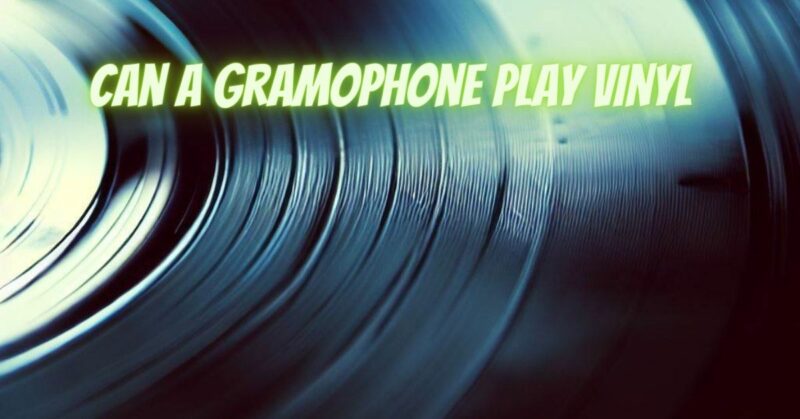Gramophones and vinyl records hold a significant place in the history of audio playback, both cherished for their vintage charm and musical nostalgia. However, when it comes to compatibility, there are crucial differences to consider. In this article, we will explore the question: Can a gramophone play vinyl? By examining the technical disparities between gramophones and vinyl records, we can better understand their compatibility and potential limitations.
- Gramophones: A Journey into the Past
Gramophones were early acoustic record players that gained popularity in the late 19th and early 20th centuries. They employed a horn to amplify sound and played records made of shellac, a brittle and less durable material compared to vinyl. Gramophones utilized a mechanical system, where a needle attached to a reproducer followed the grooves of the record, producing sound through the horn. These mechanical devices were not designed for the playback of modern vinyl records.
- Vinyl Records: A New Era of Audio Playback
Vinyl records, also known as phonograph records or LPs (long-playing records), became prominent in the mid-20th century. They are made of polyvinyl chloride (PVC), a more durable and flexible material than shellac. Vinyl records introduced several improvements, such as higher fidelity and longer playtimes. They feature microgrooves with finer details, requiring a different stylus size and tracking force compared to gramophone needles.
- Technical Incompatibility:
a. Groove Size and Depth: Gramophone needles are larger and have a different shape compared to the stylus used for vinyl records. Vinyl records have narrower grooves with a higher depth of modulation, allowing for more precise tracking of the stylus. Using a gramophone needle on vinyl records can damage the grooves and compromise the sound quality.
b. Tracking Force: Gramophone needles require higher tracking force due to the nature of the material and groove design of shellac records. Vinyl records, on the other hand, require lower tracking force to prevent excessive wear on the delicate grooves. Using a gramophone needle with excessive tracking force on vinyl records can cause significant damage.
c. Speed Compatibility: Gramophones typically operate at different speeds (e.g., 78 RPM), while vinyl records are commonly played at 33 1/3 or 45 RPM. The rotational speed difference makes gramophones unsuitable for playing vinyl records.
- Considerations for Compatibility:
To play vinyl records, it is crucial to use a turntable or record player specifically designed for vinyl playback. These modern devices feature tonearms with appropriate stylus sizes, adjustable tracking force, and selectable speeds to accommodate the requirements of vinyl records. Attempting to use a gramophone for playing vinyl records can result in irreversible damage to both the records and the gramophone itself.
Conclusion:
While gramophones and vinyl records share a place in audio history, they are not directly compatible. Gramophones were designed to play shellac records with different groove characteristics, tracking force requirements, and rotational speeds. Vinyl records, on the other hand, require specialized turntables or record players with suitable stylus sizes, tracking force adjustment, and speed settings. If you have a collection of vinyl records, it is essential to invest in a dedicated turntable or record player to ensure optimal playback quality and preserve the longevity of your vinyl collection.


